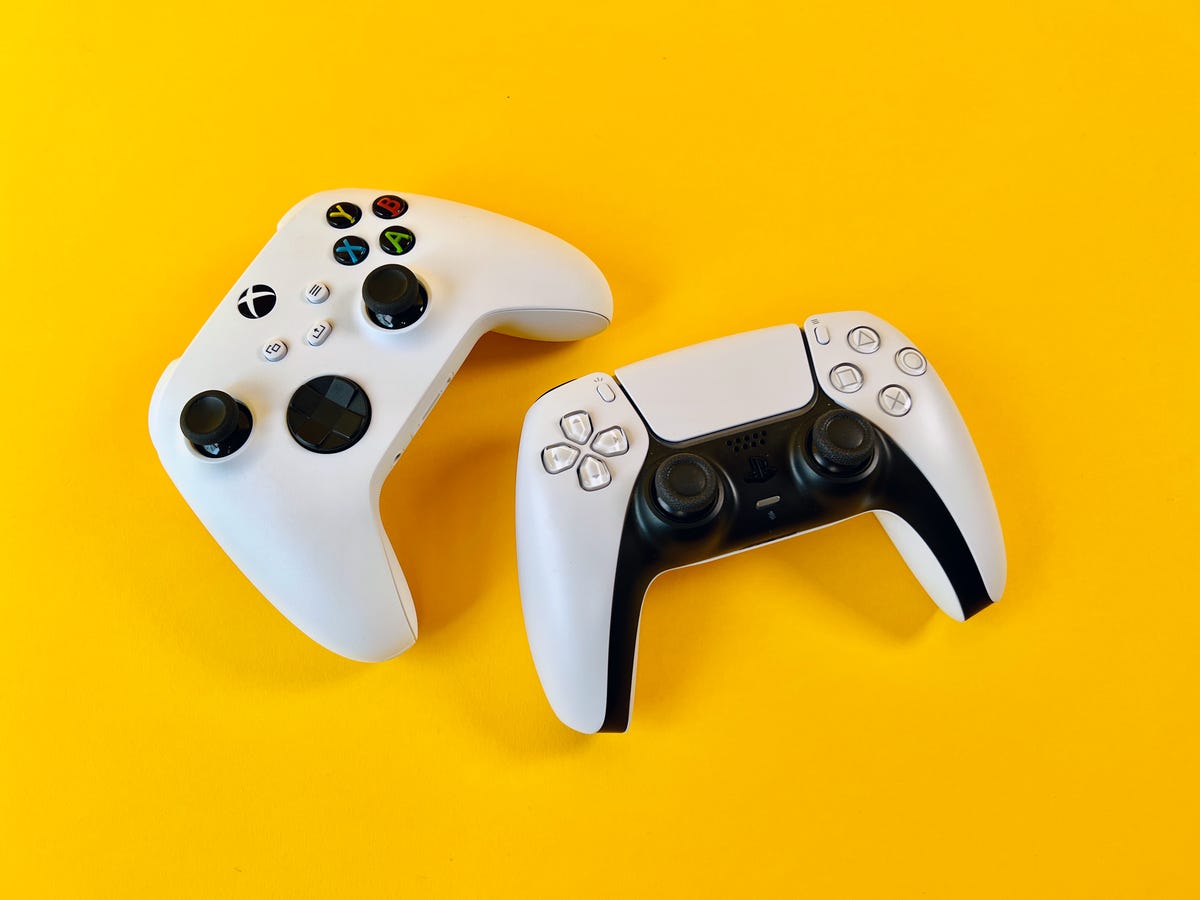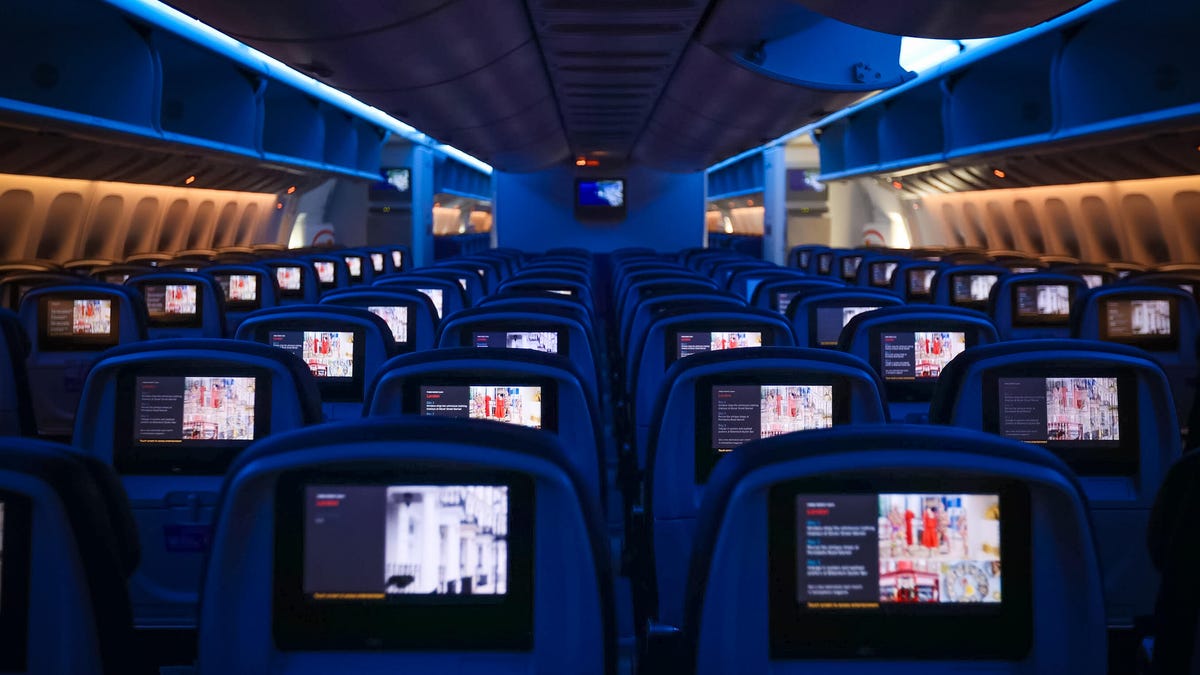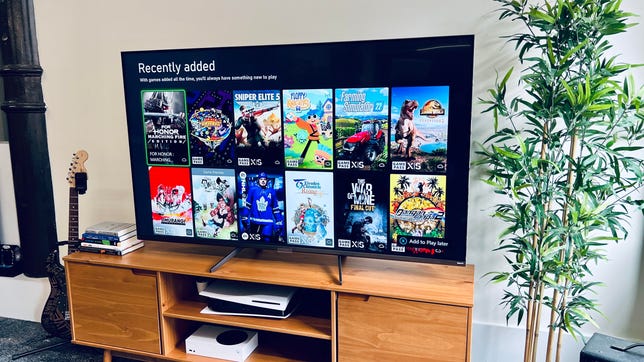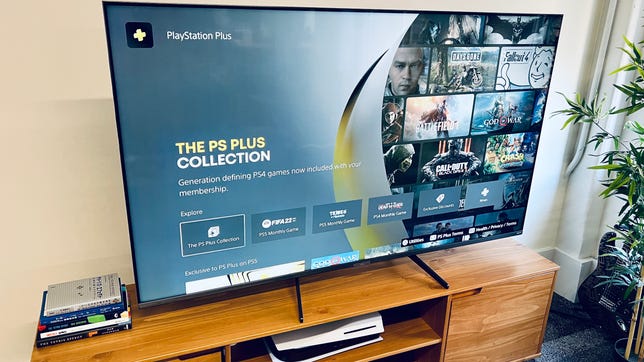Technologies
Here Are the Best Game Subscription Services
Every gaming platform has monthly game subscriptions, from Xbox Game Pass to PlayStation Plus.

Just like movies and television, gaming streaming services have taken over. Every gaming platform has at least one, with Xbox, PlayStation and Nintendo building their gaming subscription servicesaround multiplayer and a library of playable titles.
That’s right, even if you aren’t interested in a digital gaming library, it might be more cost-effective to subscribe to one just to access things like multiplayer — and you might even find a new favorite game along the way.
With cloud gaming and the PC version of Xbox Game Pass, subscriptions are a big part of PC gaming, but not yet the default. It helps that PC gamers can buy games a la carte from a variety of shops (Steam, GOG and so on), which means individual games are often discounted.


And if content subscriptions are the future of gaming, then cloud gaming subscriptions are the future of that future, as they require almost no specialized hardware, and generally work anywhere, from an iPad to a cheap Chromebook. For this roundup, we’re including both download and cloud-based subscription services.
That said, the road to cloud gaming isn’t always a smooth one. Google shut down its Stadia service in January. And the very first cloud-gaming service, On Live, started in 2010 and shut down in 2015.
Xbox Game Pass Ultimate remains the gold standard, offering a catalog of games across console, PC and cloud (which works on practically any device). But Sony has revamped its PlayStation Plus service to be much closer to what Microsoft offers.
The top tier of services includes:
- Xbox Game Pass Ultimate
- PlayStation Plus
- Nintendo Switch Online
- GeForce Now
- Apple Arcade
Other players include:
- EA Play
- Ubisoft Plus
- Google Play Pass
- Amazon Luna
- Amazon Prime Gaming
Dan Ackerman/CNET
Game Pass has evolved far beyond its Xbox-bound origins to become a subscription that delivers something for everyone who plays games, and now encompasses console and PC game downloads, access to online multiplayer services, a deal with gaming giant EA and a cloud-based service that streams games to nearly any device.
Microsoft offers several versions, but because of how the features are sliced up between them, only the $15-a-month Ultimate plan, with all the benefits detailed above, really makes sense. New subscribers can get their first month for just $1 right now as well.
Dan Ackerman/CNET
This service went through a dramatic change in 2022. The new PS Plus incorporates a large game catalog and also Sony’s PS Now cloud gaming service. Subscribers have access to three tiers: Essential, Extra and Premium (called Deluxe in some countries).
Essential is the same as the previous version of PS Plus, allowing access to online multiplayer games, along with PSN in-store discounts, cloud game saves and two new free-to-you games each month (similar to Xbox Live Gold).
Extra has about 400 PS4 and PS5 games available to play via download for $15 monthly, while Premium costs $18 a month and adds PlayStation 1, PS2, PS3 and PSP games, a handful of time-limited game demos and cloud streaming for select games.
Essential is the least expensive ($10 a month), but Extra ($15 a month) is the tier everyone should have. Premium ($18 a month) feels like a stretch, unless you’re really into retro games. — Oscar Gonzalez
Nintendo
If you want to play online multiplayer with a Nintendo Switch, there’s only one option: Pay for Nintendo Switch Online. The service ranges in price depending on whether you’re playing by yourself or have other family accounts: $19 for a single person is the way to go for most, while $35 covers eight Nintendo family accounts in case others play (or have their own Switches).
Unlike other services, which charge by the month, this single fee covers an entire year. Besides online play, access to a bunch of free NES and SNES games are included, as well as Pac-Man 99. Online cloud saves are useful in case you play across multiple Switches, too.
A bonus tier introduced in 2021 called the Expansion Pack probably isn’t worth it unless you’re a serious Switch player or a lover of retro games. It comes with add-on Animal Crossing, Splatoon 2 and Mario Kart 8 DLC packs that normally cost around $25 each, and adds a bunch of Sega Genesis and N64 games.
But the $50-a-year plan ($80 a year if you choose the family account access) still doesn’t feel worth it yet. If you really love Sega games, there’s already a Genesis Classics compilation in the eShop that’s often on sale. — Scott Stein
Lori Grunin/CNET
GeForce Now differs from the competition in that it lets you play games you’ve already paid for rather than requiring you buy a special version of the game (like Google Stadia or Amazon Luna) or stream games from a circumscribed subscription library (like Xbox Game Pass Ultimate or the Sony PlayStation Plus Premium).
It also works, via an app or web browser, on Android, Windows and Mac OS devices, as well as Chromebooks, iPhones and iPads.
The service costs $10 a month for a version that supports 1080p resolution at up to 60 frames per second. For $20 a month, a premium tier supports 4K resolutions at up to 120fps. A free tier is a great way to try it out, but limits you to one hour of play at a time.
Because of its smart set of plan options, solid performance and big and growing list of supported games, along with Nvidia’s aggressive strategy for its data center and GPU businesses (the bedrock on which GeForce Now is built) I’m recommending it for gamers who’ve amassed large game libraries and want to play them in more places. — Lori Grunin
James Martin/CNET
Apple Arcade has established a polished service with something for every kind of gamer since its launch in 2019. For just $5 per month, subscribers can play hundreds of games without ads or in-app purchases across all their iOS devices. New games are added weekly along with updates for existing titles. You can download and play all of Apple Arcade’s games offline.
The service is still a solid option for users seeking family-friendly gameplay, but Apple Arcade increased its appeal by adding more social and multiplayer games, as well as classic and well-known games already available in the App Store. — Shelby Brown
Also tested
EA Play
For $5 to $15 a month, you get access to a catalog of EA games, but EA Play is also included in Xbox Game Pass Ultimate.
Ubisoft Plus
For $15 a month, you get access to Ubisoft games as a stand-alone PC subscription, or as a paid add-on to Stadia or Luna, and eventually Xbox.
Google Play Pass
Like Apple Arcade, the Google version for Android phones includes lots of games, but also other apps. It works on Android devices only.
Amazon Luna/Prime Gaming
Luna is Amazon’s cloud-based service, like Stadia, that offers different catalogs for between $5 and $18 a month. Prime members can stream some games at no additional cost, and also get access to «a rotating selection» of full downloadable games. Amazon also owns Twitch, so there’s deep built-in integration for streamers.
Stadia
Google’s cloud-based service is no more, but you can still go back and read our launch review of Google Stadia.
Technologies
Can Chemicals Turn My Orange iPhone 17 Pink? Here’s What I Found Out
There are reports that some cosmic orange iPhone 17 Pro handsets are turning pink. I threw chemicals at my iPhone to see what would happen.

A recent Reddit thread suggests that it’s possible for a cosmic orange iPhone 17 Pro to turn vibrant pink. As PCMag’s Eric Zeman noted, it’s likely that the phone has been discolored by cleaning substances that affected the finish, turning it from vibrant orange to a wild hot pink. Sure, this might technically be a fault, but in all honesty I love pink phones and the idea of a hot pink iPhone 17 Pro filled me with joy. So I wanted to see if I could test the theory and see just what color-changing effects various household cleaners might have on my phone.
It’s important to note here that the iPhone 17 Pro I used was bought by CNET for the purposes of testing. Had I paid over $1,000 of my own money I wouldn’t be so reckless in smearing it with chemicals that could potentially irreparably harm it. And you shouldn’t either. If you need to clean your phone, do it safely. Disclaimer aside, let’s dive in.
The chemicals
I bought two chemicals to test this out. Zeman explains that it may be oxidation that caused the color to change and that hydrogen peroxide could do this. I couldn’t find this over the counter in the UK, so I instead bought an «oxy-active» stain remover spray that, among other things, contains «oxygen-based bleaching agents» which sounded ideal. Apple also clearly states «don’t use products containing bleach or hydrogen peroxide» on its support page so, naturally, I bought some thick bleach too.
Oxy application
I started by spraying the oxy cleaner on a microfiber cloth until it was noticeably wet from the liquid and then liberally applied this all over the rear of the iPhone. The Reddit user with the affected phone showed that it only affected the metal parts, not the glass back panel, so I made sure to focus my attention on the sides and camera bar.
With the phone well and truly doused in chemicals that have no business being anywhere near a phone, I left it to sit and think about what it had done for 30 minutes — after which time I wiped it dry and took a close inspection. Disappointingly, my phone was still factory orange, rather than «what the hell have you done to your phone» pink. Time to move on.
Bleach blast
I opened the bleach and trying hard not to think about my days as a middle school cleaner, applied a liberal blob of the stuff to a cloth and smeared it over the defenceless phone, concentrating again on the metal areas. I definitely should have worn protective gloves for all of this so please make sure you take better care of yourself than I do if you do anything with bleach.
Again, I gave it a 30-minute settling in period before cleaning it off and inspecting the results.
The phone remained as orange as ever, looking as box fresh as it was the day before when it was, indeed, box fresh. The orange color hadn’t changed and now almost 24 hours later there’s still no sign of discoloration of any kind.
Is the pink iPhone 17 real?
I can’t say with any certainty whether the Reddit user’s images of a pink iPhone 17 Pro are real or not. The cuddly human side of me wants to take them at their word, while the journalist in me is sceptical. What I can say with certainty is that putting your orange iPhone into close contact with household cleaning products isn’t going to win you a funky, ultra-rare pink hue that you could sell on eBay for a small fortune.
It’s possible that using pure peroxide could be the thing that does it, but to be honest, if you’re going out of your way to throw industrial-grade chemicals at your phone then you may as well just directly try and dye it. My goal here was to see how susceptible the orange model is to everyday household cleaners such as kitchen cleaner or bathroom bleach — the sort of things it might naturally come into contact with in routine use. And what I’ve found is that, no, it won’t ruin the nice orange color. But it’s probably still not good for your phone.
Technologies
My Teen Loves Her Apple AirPods Pro 2 and You Will Too With This $100 Off Deal for Black Friday
Apple’s AirPods Pro 2 have everything you could want from a pair of wireless earbuds, plus a steep discount.

Black Friday deals: The Apple AirPods Pro 2 are some of the best personal audio gear on the market, even if they aren’t the latest model anymore. Sure, Apple’s AirPods Pro 3 are the newest earbuds in the lineup but the AirPods Pro 2 are still an excellent pick for most people.
They’re an even better buy this week during early Black Friday sales when you can get your hands on a pair of Apple AirPods Pro 2 at a discount. Right now, Walmart is shaving a massive $100 off the AirPods Pro 2, dropping the cost to $139. That’s one of the lowest prices we’ve seen — but we doubt this deal will stick around for long.
Don’t miss any of our unbiased tech content and lab-based reviews. Add CNET as a preferred Google source.
HEADPHONE DEALS OF THE WEEK
-
$248 (save $152)
-
$298 (save $131)
-
$170 (save $180)
-
$250 (save $200)
CNET’s key takeaways
- You can get these amazing earbuds for just $139 right now at Walmart.
- My teenager loves everything about them.
- The sound quality is exceptional.
- The noise cancellation can help give you some peace, even in a busy home.
My 13-year-old daughter loves her music and her privacy, and for years she has wanted a pair of AirPods. They’re not cheap so I’ve only been getting her more budget options, like the Amazon Echo Buds, as a result. These kept seemingly disappearing, though, so I finally ponied up for the AirPods Pro 2.
I picked them up during last year’s sales, and they were definitely well-received. She’s happy, she uses them every day, and she hasn’t lost them yet. The AirPods Pro 2 are currently on sale at Walmart for $139, a nice price for a high-quality pair like these, and one of the lowest we’ve seen.
What about the AirPods Pro 3?
The AirPods Pro 3 weren’t available at the time I bought the AirPods Pro 2, but they were rumored, and I didn’t wait to see what they offered. As CNET’s resident headphone expert, David Carnoy summarized in his AirPods Pro 3 and Pro 3 comparison, the newer model is «significantly improved in the four most important areas: fit, sound quality, noise cancellation and battery life.» They also have heart-rate monitoring, like the Beats Powerbeats Pro 2.
Hey, did you know? CNET Deals texts are free, easy and save you money.
While these are undoubtedly all important things, a lot of people aren’t going to notice the differences or make the most of the new features. With the AirPods Pro 3 being newer, they’re on a smaller sale and are currently available at Amazon for $220, which is $30 off the list price.
Why I didn’t get the AirPods 4 instead
Why did I choose AirPods Pro 2 instead of the AirPods 4 with ANC? First, as I mentioned in another article about a different pair of earbuds I bought, I think sealed, in-ear buds are better than open-design models like the AirPods 4. The seal creates another layer of noise isolation and contributes to superior sound quality, and if you want to pay attention to the world you can always engage ambient sound mode, which Apple calls transparency mode.
Also a factor was that, at the time, Carnoy considered the Pro 2 the best Apple noise-canceling wireless earbuds: «While we’re quite impressed with those new models — and with the AirPods 4 ANC in particular — the AirPods Pro 2 remain arguably the best Apple AirPods you can buy if you don’t mind having silicone ear tips jammed in your ears,» he said.
My daughter uses earplugs all the time to help her sleep, so she definitely qualifies as somebody who’s comfortable stuffing things in her ears. Like her fingers, when I start using words like «sigma,» «skibidi» and «relatable» to try to relate to her.
I asked Carnoy about the Pro 2s potentially not fitting in her kid-size ears and he reassured me that the range of eartips that come with the Pro 2s «now include XS, so they should fit.»
Do AirPods make a great gift?
It took me years to finally understand, but yes, for someone looking for wireless earbuds, AirPods — especially the Apple AirPods Pro 2 — make the perfect gift, regardless of whether you’re a teenage girl.
Join Our Daily Deals Text Group!
Get hand-picked deals from CNET shopping experts straight to your phone.
By signing up, you confirm you are 16+ and agree to receive recurring marketing messages at the phone number provided. Consent is not a condition of purchase. Reply STOP to unsubscribe. Msg & data rates may apply. View our Privacy Policy and Terms of Use.
Technologies
If You’re Flying for the Holidays, This Bluetooth Dongle Transforms In-Flight Movies, and It’s 35% Off for Black Friday
Watch airplane movies just like you would at home with this game-changing device.

Air travel for the holidays can be stressful, especially when winter weather or flight delays force a change of plans, but one perk of flying still remains — watching new-release movies. However, in-flight entertainment on most airlines usually requires a wired set of earbuds. (And the ones the airline hands out are so bad they may as well not even be connected.)
I’d far prefer to use my wireless, noise-canceling AirPods Pro, but they connect only via Bluetooth. There’s a simple tech solution that makes viewing movies on the plane feel more like watching them on your couch.
The AirFly is a simple Bluetooth dongle that allows me to connect my wireless earbuds directly to the airplane’s entertainment system, eliminating the need for adapters or wired workarounds.
It’s become a must-pack item in my travel bag. Since I started using it, I’ve stopped dreading in-flight audio and finally get to enjoy movies on the plane. If you fly often, this little gadget could completely change how you travel. And the base level AirFly SE is 35% off for Black Friday at Amazon.
The AirFly Pro lets me enjoy in-flight entertainment
The AirFly Pro from Twelve South is a minimally designed dongle that allows me to connect to the 3.5mm headphone jack in my airplane seat, enabling me to listen to in-flight entertainment on my noise-canceling earbuds.
All I have to do is pair the AirFly with the Bluetooth headphones I’m using, such as my AirPods Pro, plug the AirFly into the display in front of me, and I’m all set. I don’t even need to use my phone to connect the two devices.
There are several versions of the AirFly: the AirFly SE, which is currently on sale for $26 on Amazon and connects to just one set of headphones, the AirFly Pro at $55, the Pro V2 at $60 and the Pro 2 Deluxe at $70, which comes with an international headphone adapter and a suede travel case.
Hey, did you know? CNET Deals texts are free, easy and save you money.
I use the AirFly Pro, which has been a game-changer for me on flights. I’ve never had to worry about battery life since the AirFly Pro lasts for over 25 hours and can be fully charged in just three hours. I can also pair two separate pairs of headphones to a single AirFly Pro, in case I’m with someone else on a flight and want to watch the same movie or show.
And if that’s not enough, the AirFly Pro also doubles as an audio transmitter, allowing me to turn any speaker with a headphone jack, such as my old car stereo, into a Bluetooth speaker.
The AirFly Pro makes a great gift for any traveler
The AirFly Pro is the perfect present to give to someone who’s planning to travel this year. Besides my Anker MagSafe battery pack, the AirFly Pro has become my most treasured travel accessory when I fly, which is why I consider it one of those can’t-go-wrong gifts.
For more travel gear, here are our favorite tech essentials to travel with and our favorite travel pillows.
Join Our Daily Deals Text Group!
Get hand-picked deals from CNET shopping experts straight to your phone.
By signing up, you confirm you are 16+ and agree to receive recurring marketing messages at the phone number provided. Consent is not a condition of purchase. Reply STOP to unsubscribe. Msg & data rates may apply. View our Privacy Policy and Terms of Use.
-

 Technologies3 года ago
Technologies3 года agoTech Companies Need to Be Held Accountable for Security, Experts Say
-

 Technologies3 года ago
Technologies3 года agoBest Handheld Game Console in 2023
-

 Technologies3 года ago
Technologies3 года agoTighten Up Your VR Game With the Best Head Straps for Quest 2
-

 Technologies4 года ago
Technologies4 года agoBlack Friday 2021: The best deals on TVs, headphones, kitchenware, and more
-

 Technologies4 года ago
Technologies4 года agoVerum, Wickr and Threema: next generation secured messengers
-

 Technologies4 года ago
Technologies4 года agoGoogle to require vaccinations as Silicon Valley rethinks return-to-office policies
-

 Technologies4 года ago
Technologies4 года agoOlivia Harlan Dekker for Verum Messenger
-

 Technologies4 года ago
Technologies4 года agoiPhone 13 event: How to watch Apple’s big announcement tomorrow





